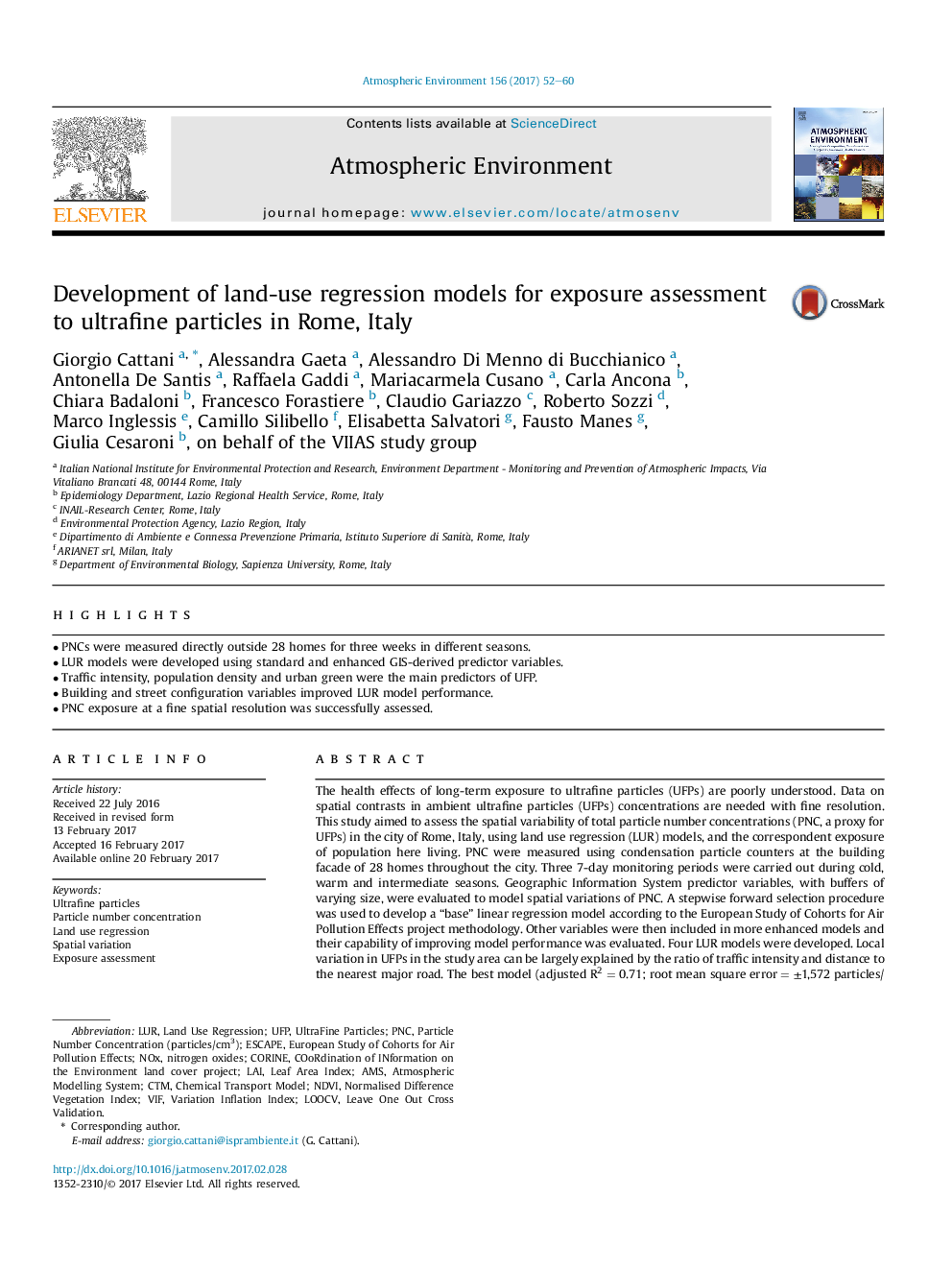| کد مقاله | کد نشریه | سال انتشار | مقاله انگلیسی | نسخه تمام متن |
|---|---|---|---|---|
| 5752987 | 1620318 | 2017 | 9 صفحه PDF | دانلود رایگان |
- PNCs were measured directly outside 28 homes for three weeks in different seasons.
- LUR models were developed using standard and enhanced GIS-derived predictor variables.
- Traffic intensity, population density and urban green were the main predictors of UFP.
- Building and street configuration variables improved LUR model performance.
- PNC exposure at a fine spatial resolution was successfully assessed.
The health effects of long-term exposure to ultrafine particles (UFPs) are poorly understood. Data on spatial contrasts in ambient ultrafine particles (UFPs) concentrations are needed with fine resolution. This study aimed to assess the spatial variability of total particle number concentrations (PNC, a proxy for UFPs) in the city of Rome, Italy, using land use regression (LUR) models, and the correspondent exposure of population here living. PNC were measured using condensation particle counters at the building facade of 28 homes throughout the city. Three 7-day monitoring periods were carried out during cold, warm and intermediate seasons. Geographic Information System predictor variables, with buffers of varying size, were evaluated to model spatial variations of PNC. A stepwise forward selection procedure was used to develop a “base” linear regression model according to the European Study of Cohorts for Air Pollution Effects project methodology. Other variables were then included in more enhanced models and their capability of improving model performance was evaluated. Four LUR models were developed. Local variation in UFPs in the study area can be largely explained by the ratio of traffic intensity and distance to the nearest major road. The best model (adjusted R2 = 0.71; root mean square error = ±1,572 particles/cm³, leave one out cross validated R2 = 0.68) was achieved by regressing building and street configuration variables against residual from the “base” model, which added 3% more to the total variance explained. Urban green and population density in a 5,000 m buffer around each home were also relevant predictors. The spatial contrast in ambient PNC across the large conurbation of Rome, was successfully assessed. The average exposure of subjects living in the study area was 16,006 particles/cm³ (SD 2165 particles/cm³, range: 11,075-28,632 particles/cm³). A total of 203,886 subjects (16%) lives in Rome within 50 m from a high traffic road and they experience the highest exposure levels (18,229 particles/cm³). The results will be used to estimate the long-term health effects of ultrafine particle exposure of participants in Rome.
Journal: Atmospheric Environment - Volume 156, May 2017, Pages 52-60
